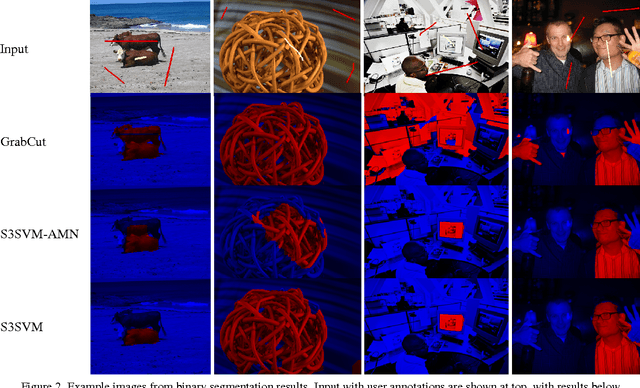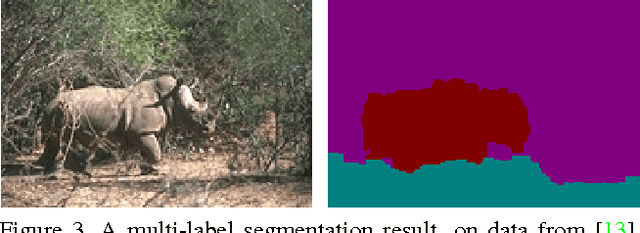Sam Park
Structured learning of sum-of-submodular higher order energy functions
Oct 01, 2013


Abstract:Submodular functions can be exactly minimized in polynomial time, and the special case that graph cuts solve with max flow \cite{KZ:PAMI04} has had significant impact in computer vision \cite{BVZ:PAMI01,Kwatra:SIGGRAPH03,Rother:GrabCut04}. In this paper we address the important class of sum-of-submodular (SoS) functions \cite{Arora:ECCV12,Kolmogorov:DAM12}, which can be efficiently minimized via a variant of max flow called submodular flow \cite{Edmonds:ADM77}. SoS functions can naturally express higher order priors involving, e.g., local image patches; however, it is difficult to fully exploit their expressive power because they have so many parameters. Rather than trying to formulate existing higher order priors as an SoS function, we take a discriminative learning approach, effectively searching the space of SoS functions for a higher order prior that performs well on our training set. We adopt a structural SVM approach \cite{Joachims/etal/09a,Tsochantaridis/etal/04} and formulate the training problem in terms of quadratic programming; as a result we can efficiently search the space of SoS priors via an extended cutting-plane algorithm. We also show how the state-of-the-art max flow method for vision problems \cite{Goldberg:ESA11} can be modified to efficiently solve the submodular flow problem. Experimental comparisons are made against the OpenCV implementation of the GrabCut interactive segmentation technique \cite{Rother:GrabCut04}, which uses hand-tuned parameters instead of machine learning. On a standard dataset \cite{Gulshan:CVPR10} our method learns higher order priors with hundreds of parameter values, and produces significantly better segmentations. While our focus is on binary labeling problems, we show that our techniques can be naturally generalized to handle more than two labels.
 Add to Chrome
Add to Chrome Add to Firefox
Add to Firefox Add to Edge
Add to Edge